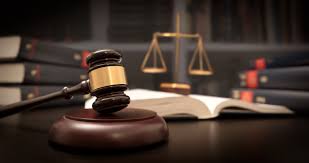
Table of Contents
DUI (Driving Under the Influence) laws have long stood as pillars of traffic safety, aiming to protect communities from the dangers of impaired driving. However, as legal landscapes and technologies evolve, these laws face new challenges in modern courtrooms across the United States. Litigators and law enforcement are navigating an increasingly complex environment where the admissibility of evidence, the reliability of technology, and shifts in societal behavior all play a role. For Arizona residents seeking legal guidance through these nuances, consulting with an experienced Scottsdale DUI lawyer can be essential to understanding the latest legal developments. Recent years have seen the emergence of high-profile court cases, mass reconsideration of old convictions, and state-by-state reforms that have reshaped the conversation around DUI enforcement. Jurisdictional boundaries, advancements in detection methods, and trends like multi-drug use are spotlighting gaps and opportunities for improvement in both legislation and day-to-day policing. As a result, legal professionals and everyday drivers alike need to stay updated on these changes to both protect their rights and understand the consequences of DUI allegations.
Jurisdictional Challenges to DUI Arrests
One of the most prominent legal debates centers on the jurisdictional limitations of law enforcement officers during DUI stops and arrests. In Florida, a landmark case addressed the admissibility of evidence gathered when officers left their official boundaries to detain and test drivers suspected of DUI. The Florida Supreme Court was tasked with deciding whether transporting a suspect beyond city lines for a breathalyzer test violated legal protocols, rendering any resulting evidence inadmissible. This decision, and others like it, highlight the importance of proper procedural conduct in building a legally sound DUI case. These jurisdictional boundaries are not merely bureaucratic; they protect individuals' rights and ensure that law enforcement actions remain within the scope of their authority. When police officers exceed those limits, both the public trust and the integrity of the justice system may be threatened. Legal precedents in this area remind agencies and courts that the duty to uphold traffic safety must also align with constitutional safeguards and fair practice.
Impact of Improper Breathalyzer Calibration
The reliability of breathalyzer devices, the bedrock of most DUI prosecutions, was called into question in Massachusetts, where tens of thousands of convictions were found to be based on improperly maintained equipment. From 2011 to 2019, flawed calibration procedures produced inaccurate readings, prompting the Massachusetts Supreme Judicial Court to insist on a review of nearly 30,000 DUI convictions. This episode serves as a stark reminder of the pivotal role that accurate technology plays in the criminal justice system and of how government oversight failures can have sweeping consequences for defendants and the credibility of legal proceedings. Several states have begun tightening requirements around breathalyzer use and calibration, implementing mandatory routine checks and comprehensive training protocols for operators. Defense attorneys often focus on questioning the reliability of devices at trial, leveraging maintenance records and operator certifications to challenge them. The Boston Globe has reported extensively on this issue, examining state responses and the broadening national conversation about technology and fair process in DUI law.

Technological Advancements in DUI Detection
The emergence of sophisticated technology is changing the landscape of DUI detection nationwide. Advanced breathalyzers now deliver greater levels of precision and reliability, dramatically reducing the likelihood of false readings that previously plagued the system. Moreover, the widespread adoption of police body cameras and dashcams ensures that entire DUI traffic stops are documented in real time, providing impartial evidence that can support or refute claims made in court. According to NBC News, the proliferation of reliable video evidence has led to quicker case resolutions and more objective case outcomes. Technology is also expanding beyond the roadside. Law enforcement agencies are using mobile evidence-collection apps, cloud-based chain-of-custody systems, and integrated databases to streamline case management and strengthen legal documentation. These digital solutions are redefining efficiency, but they also require robust legal checks to ensure privacy and prevent misuse.
Legal Reforms and Stricter Penalties
Responding to concerns about rising DUI incidents, many states are introducing stricter penalties to deter impaired driving. In Florida, for example, new legislative proposals aim to impose steeper fines and longer jail sentences, with even first-time offenders potentially facing a $500 fine and at least six months in jail. Repeat offenders would face even harsher consequences. These changes reflect a wider trend across the country: intensifying the penalties for DUI to strengthen deterrence and promote public safety. Read more about Florida's proposed legislation here. Advocates for reform argue these stronger penalties are overdue, especially as DUI remains a leading cause of motor vehicle fatalities in the U.S. Conversely, some criminal justice reformers urge caution, emphasizing the importance of fair sentencing, support for rehabilitation, and the elimination of systemic biases in DUI enforcement.
Multi-Drug Use and Its Legal Implications
An emerging area of concern for DUI courts and law enforcement is the increase in drivers impaired by more than one substance simultaneously, commonly a combination of alcohol, prescription medications, and illicit drugs. Unlike alcohol, where blood alcohol concentration (BAC) provides a clear standard for impairment, multi-drug impairment is far more complex and difficult to quantify. Prosecution and defense alike face challenges when standardizing impairment thresholds across drugs that can affect individuals in profoundly different ways. Lawmakers, scientists, and the legal community are calling for better testing and clearer regulations for these multifaceted cases. As legal frameworks catch up with these new realities, ongoing research and pilot programs are exploring innovative drug screening methods—potentially paving the way for a future where multi-drug DUIs are prosecuted with the same level of scientific precision and fairness as single-substance cases.
Conclusion
As courts and legislatures tackle the evolving landscape of DUI enforcement, it is clear that legal, technological, and social factors are driving significant transformation. Maintaining fairness, accuracy, and public safety remains paramount in the face of these challenges. Legal professionals, drivers, and citizens all benefit from staying informed about jurisdictional disputes, technological innovations, and the new risks of multi-drug impairment. The outcome—safer roads and a justice system that adapts to the modern world—rests on continuous vigilance and progressive reform.

This post has been published by the admin of our website, responsible for content management, quality checks, and providing valuable information to our users.

